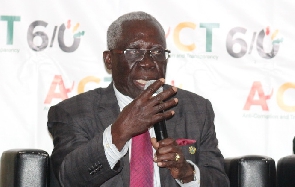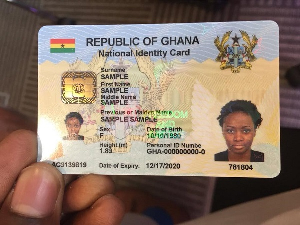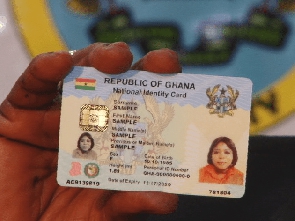New revenue managers at the Ghana Ports, ICUMS, has outlined guidelines for the release of cargo for the Bills of Entry processed by Ghana Customs Management System (GCMS).
The guidelines, which are in two parts, make provisions for Meridian Port Services (MPS) and Ghana Ports and Harbours Authority (GPHA), and all other terminals, including inland Container Depots.
On Monday, June 1, 2020, scores of importers were left stranded at the Tema Port when they failed to process their documents through Customs’ new Integrated Customs Management System (ICUMS) on day-one of its full deployment at the country’s busiest seaport.
According to media reports, most of the affected clearing agents had begun their valuation process through the GCMS, the previous system which was operated by GCNet but did not have their data transferred onto the ICUMS before it was shut down and may have to start all over again.
Others who started the process from scratch through the ICUMS also experienced some technical hitches at some level, especially at the compliance stage.
It took the intervention of a ministerial delegation led by the Trade and Industry Minister, Alan Kyerematen, to calm down the stranded and visibly angry shippers.
On Tuesday morning, Ghana Link Network Services, managers of ICUMS released a statement to outline guidelines for the release of cargo for the Bills of Entry processed by Ghana Customs Management System.
Under MPS, ICUMS made room for three scenarios:
Advanced Bills of Entry
In scenario one, Advanced Bills of Entry processed under the Ghana Customs Management Systems will face vetting of documents at the ICUMS Help Desk. A list of examined containers will be compiled by the Physical Inspection Unit. If there are no discrepancies, Customs Preventive Unit will confirm and release the container. If discrepancies are found, however, customs officers will process COR in ICUMS before release. The cargo will then be released out of customs charge or by MPS.
Post-Verdict Bill of Entries
Under scenario two, i.e. Post-Verdict Bill of Entries processed under the GCMS with payment made and Delivery Orders received, a truck appointment shall be made by the Agent. The cargo containers will be scanned at MPS and verdict of the Customs Physical Inspection Supervisor to assign for examination for selectivity verdict.
If the verdict is green, Customs Preventive Unit will confirm and release the cargo. If it’s yellow, it may be subject to examination while red will go for examination. If there are discrepancies in the Yellow and Red, customs officers will process for COR in ICUMS.
A satisfactory inspection will trigger a compilation of containers for submission into MPS system for subsequent release out of customs charge. The cargo will then be released out of customs or MPS.
Pre-verdict with the Bill of Entry
Under scenario three, i.e. Pre-verdict with the Bill of Entry Processed and payment made in GCMS, the Declarant recreates Bill of Entry in ICUMS using a Clearance plan NBD (Non Bill of Laden Declaration) and CPC 40D22 and attaches supporting documents (CCVR, GICCS BoE, Payment Receipt, B/L, Permit and other relevant documents). Customs then vets and approves. This process is fast-tracked by a dedicated team.
The scanning of containers is undertaken by MPS and image generated compared with BoE Information in ICUMS. The verdict is then transmitted for examination.
The Yellow and Red selectivity verdicts are forwarded to a physical inspection supervisor to assign for inspection.
If there are any discrepancies in the Yellow and Red, customs officers will process for COR in ICUMS.
A satisfactory inspection will trigger a compilation of containers for submission into MPS system for the subsequent release out of customs charge and released by MPS.
A green verdict will be an automatic release.
For GPHA and all other terminals, including Inland Container Depots (ICDs), two scenarios have been created.
Bill of Entries processed in GCMS and duty paid
Under scenario one, under Bill of Entries processed in GCMS and duty paid, (no D/O) the Declarant recreates BOE in ICUMS using Clearance Plan NBD (Non B/L Declaration) and CPC 40D22 and attaches supporting documents (CCVR, GICCS BOE, Payment Receipt, B/L, Permit and other relevant documents). Customs will then vet and approve through a dedicated team.
Scanning of containers is undertaken by MPS and the image generated and compared with BOE information in ICUMS via laptop. The verdict is then transmitted to examination. Yellow and Red selectivity verdicts are forwarded to physical Inspection Supervisor to be assigned for inspection.
If there are discrepancies in the Yellow and Red, customs officers will process for COR in ICUMS. A satisfactory inspection triggers a compilation of containers for submission into the MPS system for subsequent release out of customs charge. A Green verdict will be an automatic release.
The cargo is then released out of Customs Charge.
BoE is processed in GCMS, with payment effected and D/O acquired
Under this scenario, BoE is processed in GCMS, with payment effected and D/O acquired; the Declarant will present GICCS Bill of Entry with Payment Receipt D/O to Customs. This will be vetted by a dedicated customs team.
GPHA or ICD schedule for physical inspection by all interested parties. If there are discrepancies during examination customs Officers process COR. Customs Preventive Unit confirms and releases cargo. Cargo is then released out of customs charge.
- Ghana Revenue Authority goes cashless at ports effective July 1
- Ghana Card allowed for customs processing on ICUMS
- GCNET ready to pay redundancy compensation to laid off workers
- ICUMS generates GH¢10.5 billion for GRA despite coronavirus impact on trade volumes
- GRA rakes in GH¢10.5 billion due to ICUMS roll out
- Read all related articles













